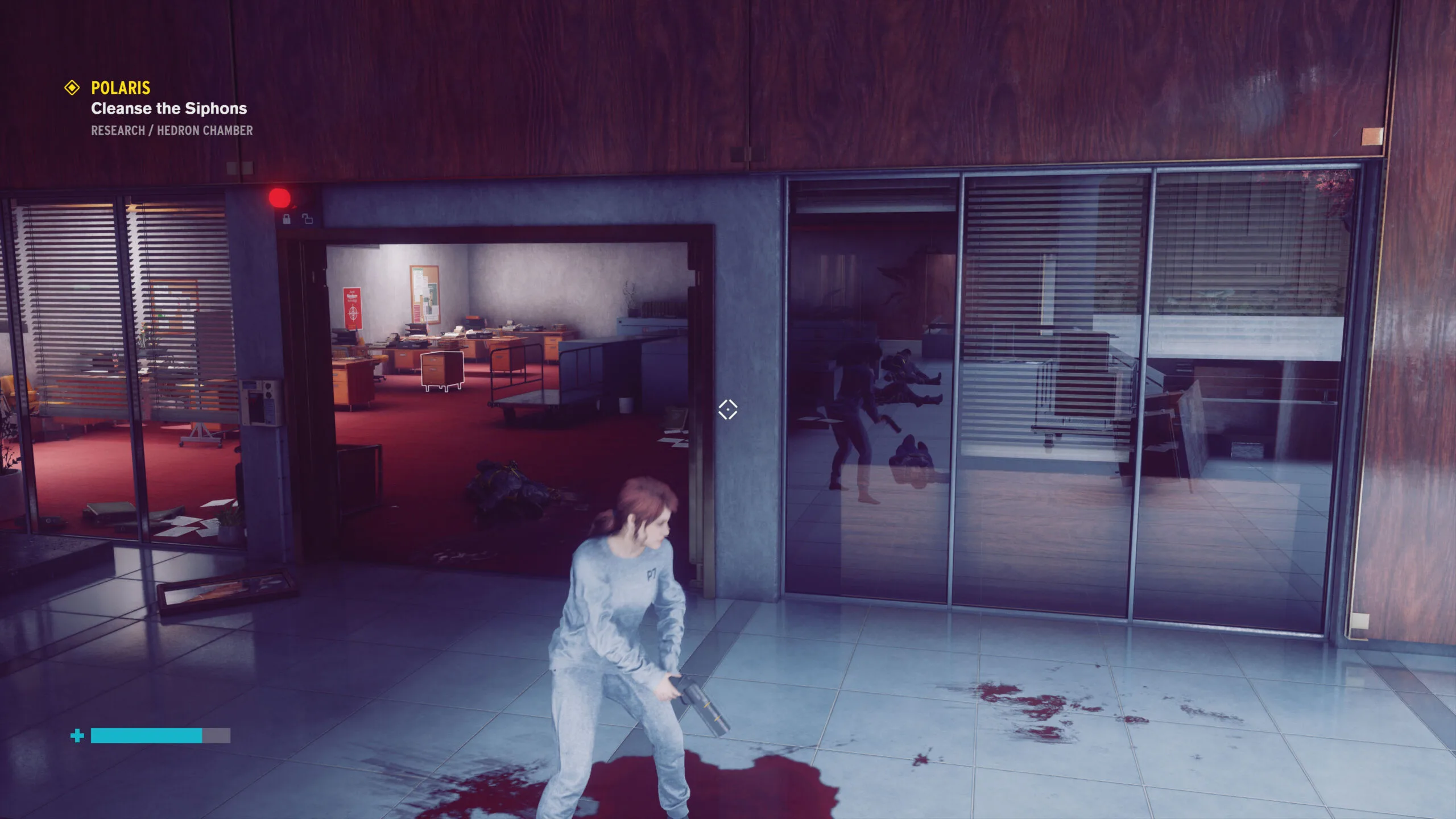Control – Remedy’s Supernatural Action PC Game Review
“We were in a f’ing boring game, but I couldn’t stop playing” – D. Faden
Control is a rare game that will immerse its players into a strange and supernatural world by keeping us entertained with a good science fiction mystery, difficult puzzles with depth, challenging tasks, intense firefights against a variety of enemy NPCs, and a dark atmosphere in multiple settings. We played for over 30 hours to arrive at the endgame after completing a dozen varied missions.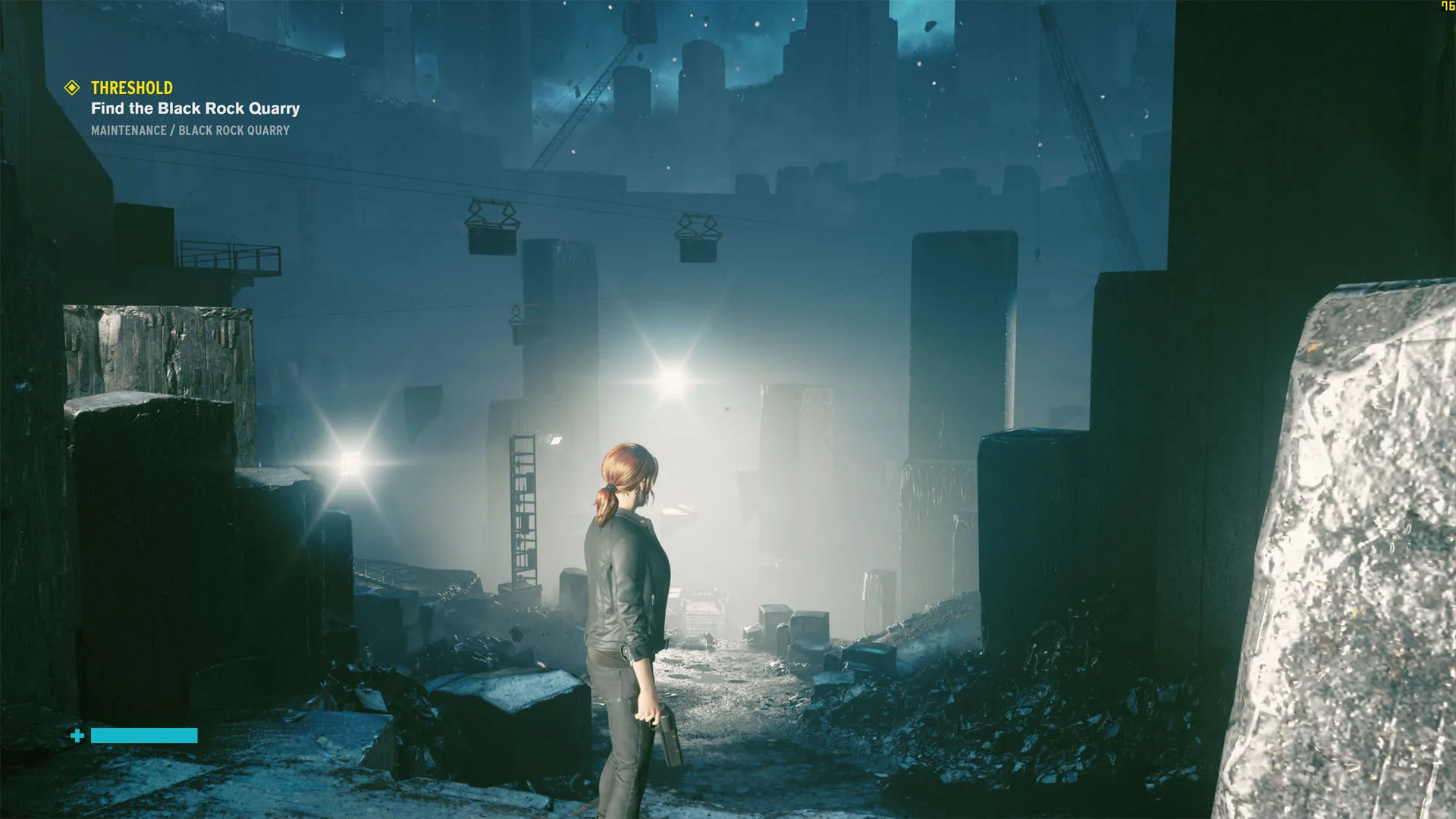
BabelTechReviews received a reviewer’s copy of Control for PC courtesy of Remedy, EPIC, and NVIDIA on Wednesday and began playing using both a RTX 2060 SUPER and a RTX 2080 Ti. Here are our impressions of Control including its implementation of real time ray tracing of ray traced reflections.
We spent so much time playing the game that we did not benchmark its performance for this review. Control will be patched tomorrow for its worldwide release, and NVIDIA will also release new drivers for it making any benchmarks outdated. Instead, we will focus on the game review and touch on its real time ray tracing reflections.
Control is a third-person action adventure shooter that will be released for PC by Remedy Entertainment and 505 Games on the EPIC platform on August 27. Remedy Entertainment, a Finnish developer, is best known for primarily linear games like the original two Max Payne games, the Alan Wake series, and Quantum Break.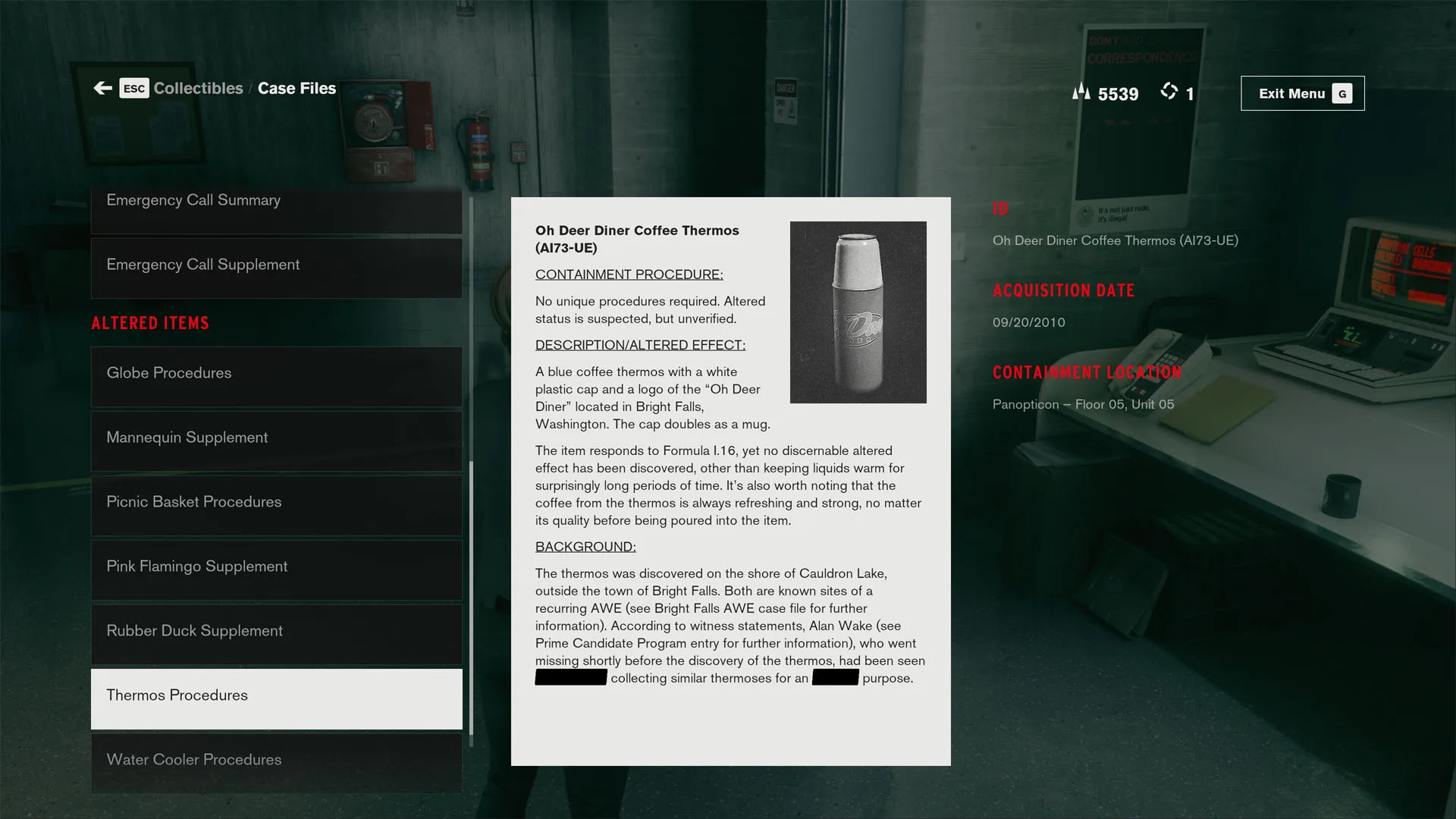
Control even pays homage to Max Payne as the building elevators are made by the Paine company, and there are several references to Bright Falls and Alan Wake. The fighting sequences are very unforgiving and the boss battles may remind older players of Max Payne’s epic battles – but without Bullet time. This time, Control gives its players much more freedom encouraging exploration across its large hub world of four primary areas.
Control starts so slowly that it left this reviewer wondering what was happening for quite some time. It took a couple of hours before it got interesting. The player controls Jesse Faden who is on a quest for answers, and is apparently lead to a government building called the Oldest House which is the headquarters of the Federal Bureau of Control (FBC). Control is set in an alternate version of the United States where supernatural events are common and the FBC actively investigates the paranormal.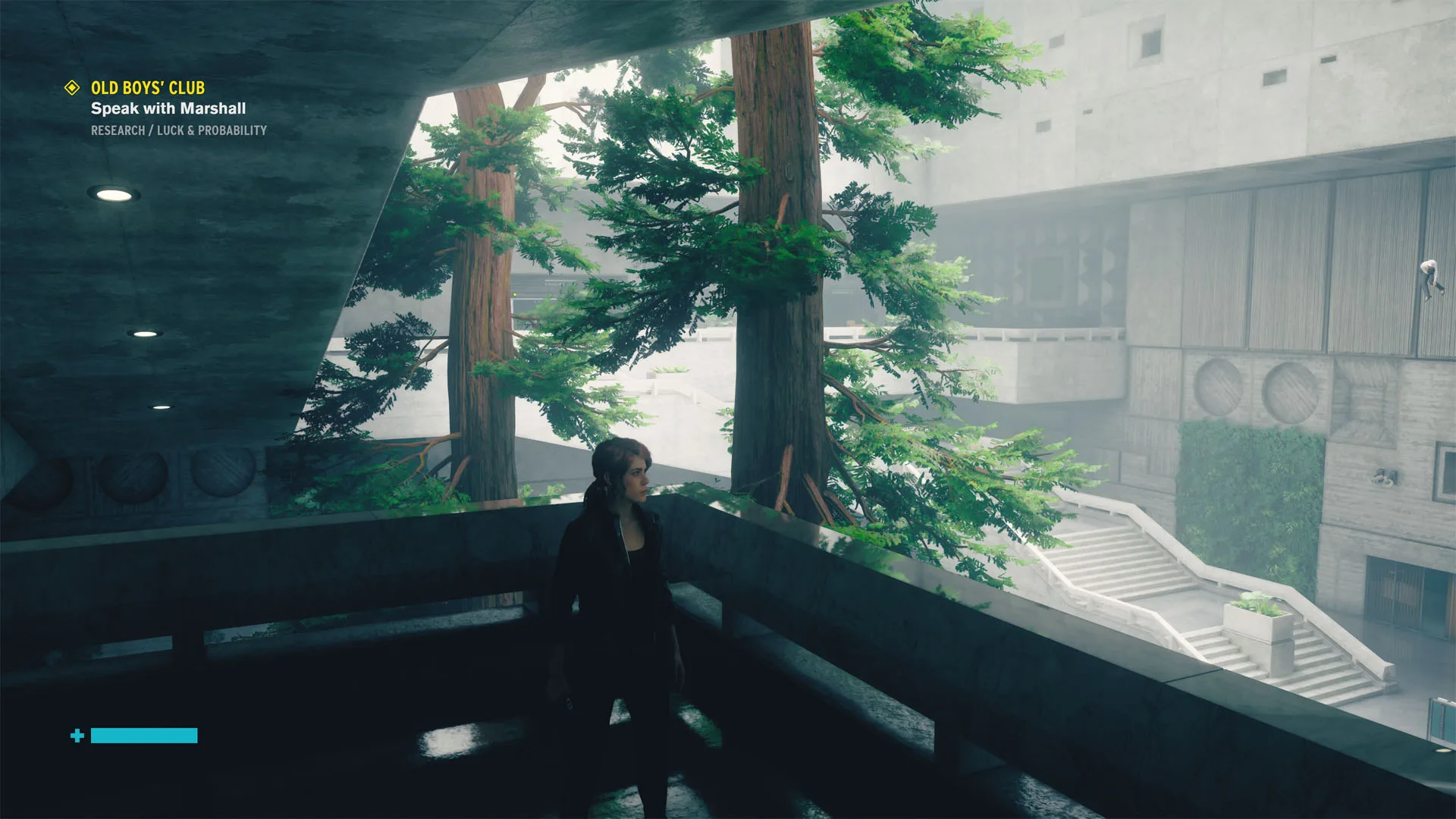
Control begins as Jesse enters the Oldest House which is under lockdown because of an attack by the Hiss, a mysterious force that has possessed and levitated most of the FBC’s employees who chant together what at first appears to be nonsense words. Red light floods the building evoking an atmosphere of foreboding evil, and the Hiss-possessed security and staff attack Jesse and their uninfected coworkers. The building itself shifts its shape and the rooms alter their appearance, sometimes radically.
Shortly after entering the Oldest House, Jesse picks up an alien shape-shifting and self-recharging weapon in the former FCB’s director’s office right after he apparently committed suicide, and she becomes the new director gifted with supernatural powers herself. Strangely, the former director appears to still communicate with her and offers guidance. During the course of her adventure, Jesse meets uninfected FBC supervisors who give her missions and help her to solve the mystery of the Hiss and of her own place in this adventure.

Besides using the director’s powerful weapon, Jesse also has the ability to capture, levitate, and fling objects with great force which can damage and destroy the Hiss-infected enemy NPCs. As Jesse completes missions, she gains ability points which may be used to strengthen her ability trees. After completing missions, she is encouraged to return multiple times for answers to her questions as the Control plot is progressively revealed. There are control points that Jesse captures and cleanses that allow her to fast travel instantly between them.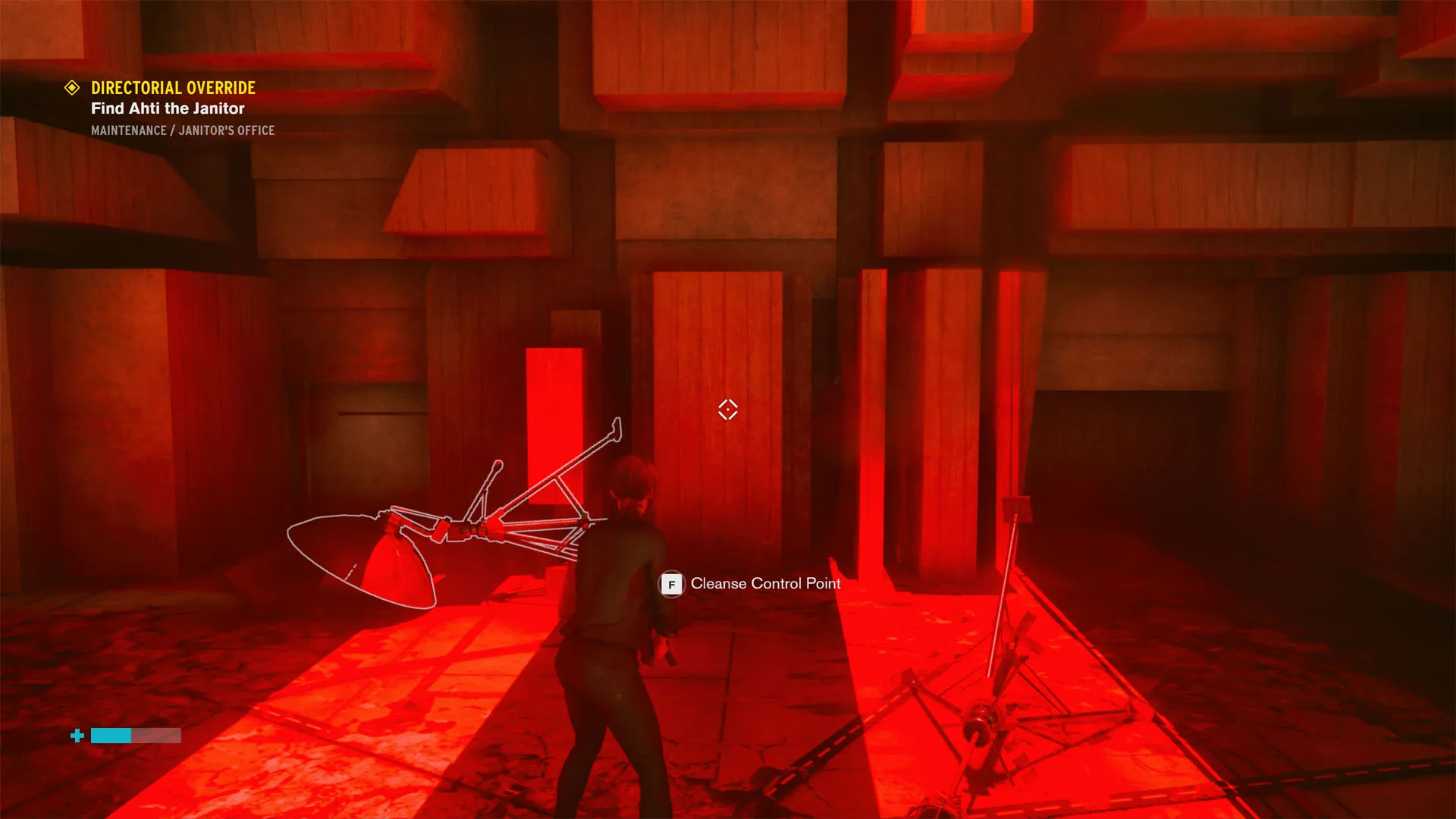
Jesse can add ability points to gain more health, or she can choose to use those points to strengthen her attack, for example. As she progresses, she can pick an option to control the minds of weakened enemy NPCs. She can also capture grenades that are tossed at her and fling them back. Eventually, Jesse even gains the ability to temporarily levitate and fly allowing her to reach areas in the game that were previously inaccessible. And as she progresses, she also gains clearance to access areas formerly closed to her which will encourage players to revisit areas multiple times.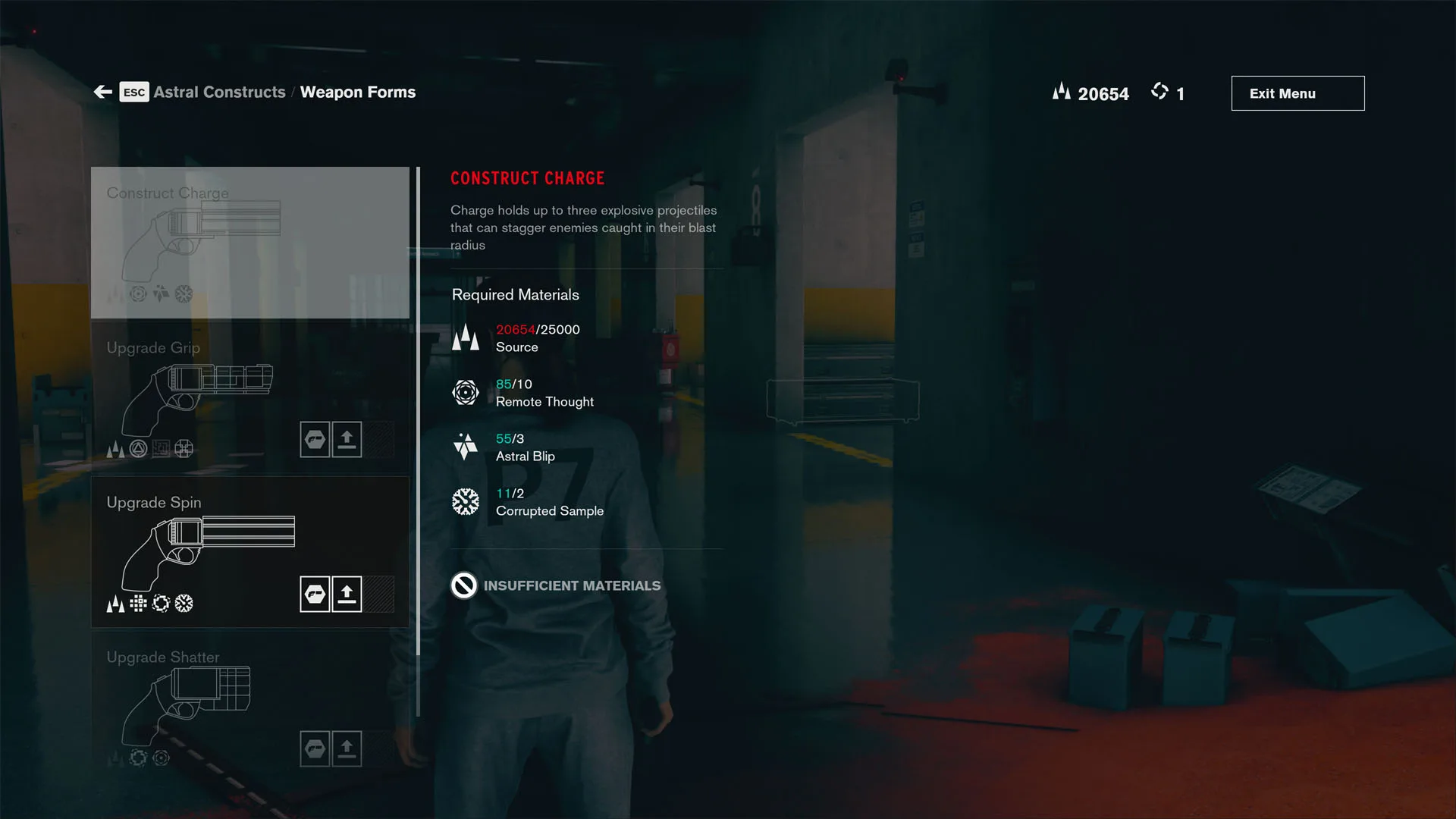
Jesse’s director’s weapon is a four-in-one sidearm that compliments her unique abilities perfectly and it is best to switch often between them. The weapon needs time to recharge after multiple discharges, and it is the perfect time to start throwing objects. After three or four throws, there is also a cool down period which is the right time to use the weapon again.
Fights are non-stop action and Jesse needs to doge and move constantly to avoid being damaged. The only cat and mouse tactics played from cover are against the flying NPCs. Control is not a cover shooter but rather it encourages the player to be aggressive. Health is regenerated by picking up dropped energy left by defeated enemy NPCs. If your health bar drops to zero, it’s back to the checkpoint.
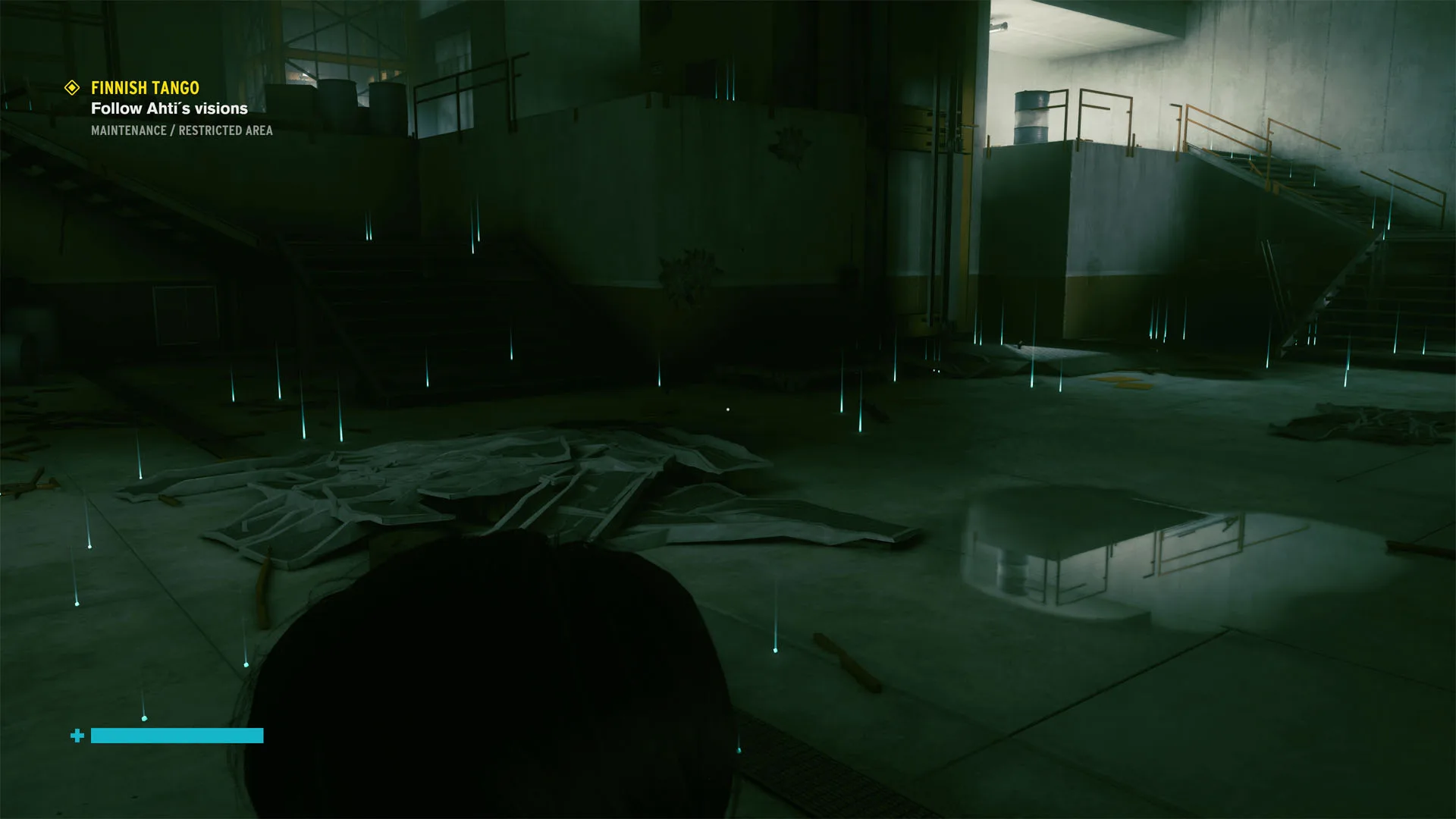
Jesse will also develop her skills as she locates and tames objects of power, many of which are found in the astral plane – a stark white ethereal location with special challenges requiring precise movements and combination key presses to proceed. If you fail, you go back to the checkpoint and start over. This reminds us of the unforgiving video games of the 1980s where a player must perfect his sequence of moves to continue. There is no “anytime save” and the game is rather difficult having no easy mode for those who just want to enjoy the story.
Jesse is not the only one who is capable of superhuman feats. Some of the NPCs who can also levitate and fly will gather debris to fling at her, and she has to be quick to get out of the way or she will take damage. If Jesse dies, she respawns at the last checkpoint or control point and will have to play from that point over again.
Although Jesse grows quite powerful, she never feels overpowered as the enemy NPCs also ramp up their numbers and abilities. Their AI is fairly predictable, but at times the unpredictable happens and Jesse will die often unless the player is really good. The checkpoints rarely require the player to replay more than a minute or two before getting right back into the battle with a few painful exceptions.
The voice acting, audio, and especially the fighting music are excellent, and the music tempo rises as Jesse enters into a firefight adding to a player’s excitement. As the last enemy NPC is killed, the music fades away. One of the real highlights comes near the end of the game as a very loud seven minute jam of “Old Gods of Asgard: Take Control” helps get the player through a difficult part. There is even a Finnish “Sankarin Tango” (Hero’s Tango) for those who may like that style of music, and somehow it just fits in well.
Control is not a short single player experience as we spent about 30 hours playing the game without seeing the ending although we reached the endgame. We completed 12 missions and would have completed even more except for the deadline that was imposed on getting this review completed in time, so we mostly stuck to the main story. However, completing the optional missions gains ability points which make it easier to get through the tough boss battles.
None of the side quests we played felt like grinding as they are very well done and integral to the story. Stopping to pick up notes and listening to recordings and watching videos greatly adds to the atmosphere, and they often give the player hints on how to proceed through the puzzles. In the tradition of a good novel, a player begins to understand the mechanics and the mind of the developers, and one may see patterns which may help to solve Control’s many puzzles.
The puzzles take a lot of thought and some are very complex but solving them are necessary to proceed. One of the puzzles involves trapping an immortal and destructive entity that requires a lot of thought plus good timing. Another puzzle involves traversing spinning turbines to reach a light switch while also remembering the “principle of 3” to move through a series of motel rooms to create a path across the void.
Control absolutely doesn’t hold any hands, and it is quite unforgiving. Many times this reviewer felt quite lost in this large world and spent a lot of time going over areas that were previously visited. Eventually, the maps made more sense as the Oldest House’s layout became clearer.
If you want to explore, you can spend as much time in the Oldest House as you wish. There is freedom to explore and some of the areas such as The Pit can be visited early, before the game takes you there on a mission, but it is much more difficult then and will have to be revisited anyway.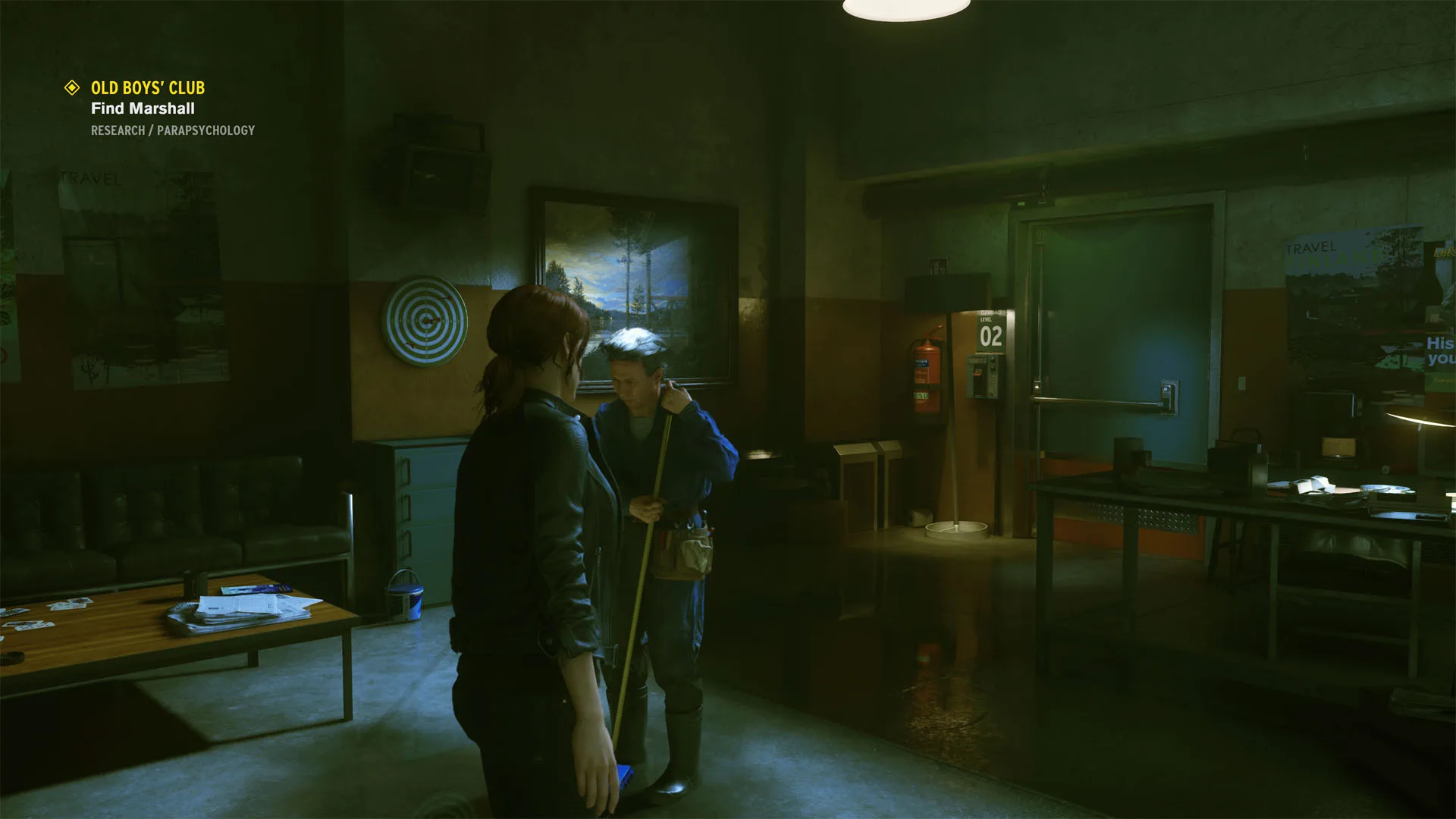
The characters Jesse encounters are well-developed and they mostly consist of researchers, security personnel, and many of the mad scientist variety, with an occasional bureaucrat. Ahti the Janitor speaks with such a heavy Finnish accent you may want to turn on subtitles to understand him since he has an important role in the game. There is also the mysterious Board which speaks to Jesse on a special hotline. The dialog is well-written and natural, and we are drawn to care about the characters if we take the time.
There are some weaknesses. Control’s story started very slowly which we found discouraging, and the endgame became tedious and we had to repeat the same thing over and over without much variety. Fortunately the beginning and the endgame were a real contrast to the ninety percent of the game that we absolutely loved. We neglected our chores, missed meals, went to bed late and even dreamed about the game, and then woke up early to get right back into it – a rare game indeed!
Although this reviewer hates the checkpoint system, Control’s is well implemented. When Jesse dies, you don’t have to start over way back nor are you forced to watch any cutscenes. Loading is very fast from a SSD and you get right back into the action.
Control appears to have little replayability. Mostly a player will want to explore everything on the first playthrough which may reach 30 or more hours. An excellent player may be able to complete the game in under 20 hours – perhaps less if he sticks just to the story missions.
There appear to be no major game-breaking bugs, but during more than 30 hours of play, we did experience several lock-ups which lead to crashes to the desktop.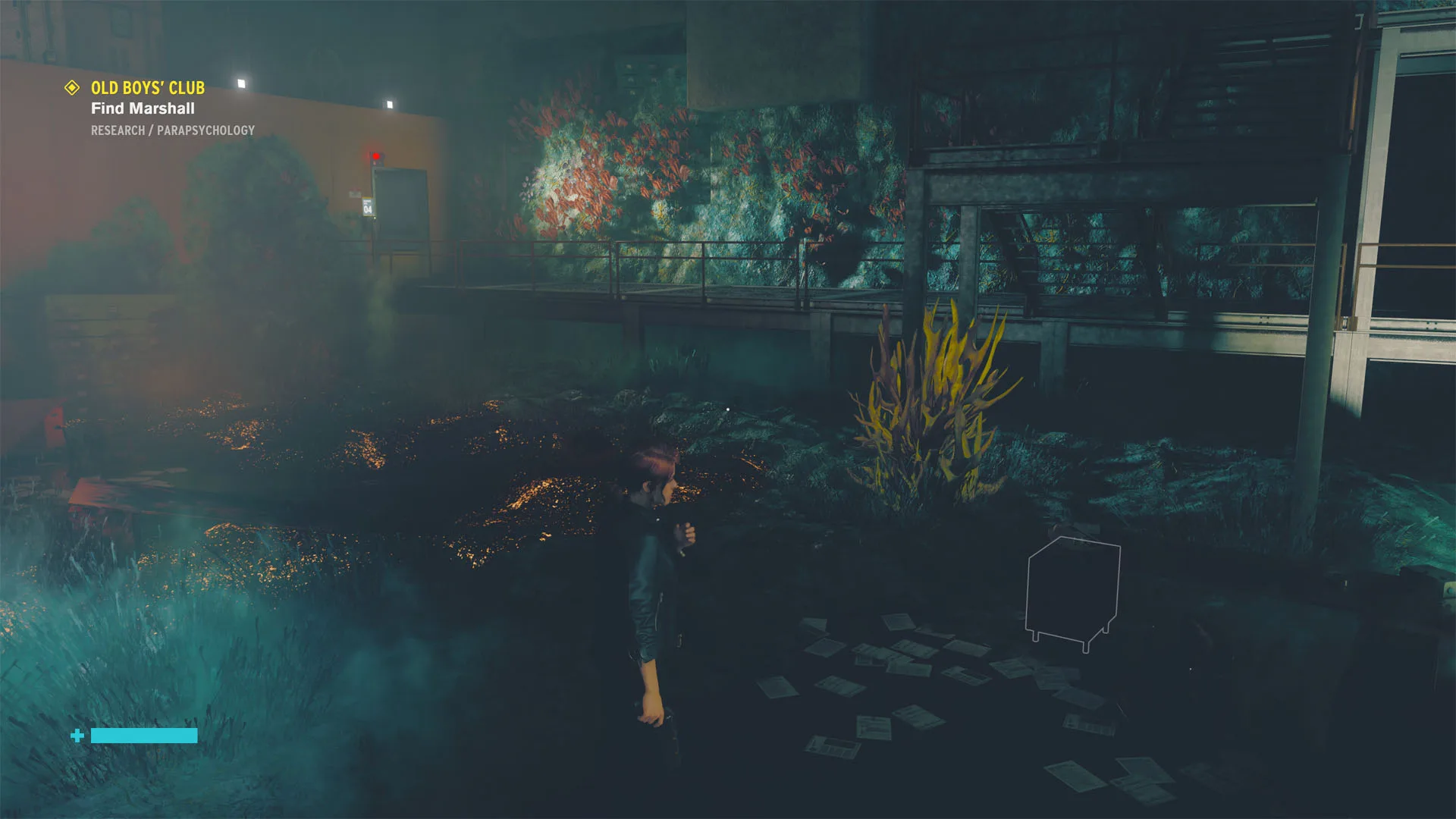
One thing that immediately stands out is the detail and impressive graphics on Control’s higher setting. The characters are reasonably detailed and overall it succeeds brilliantly in creating a immersive world. The settings are diverse – from the mold you can almost smell in the overrun Pit, to brightly lit offices. In one area, the walls shift and new corridors open up as you attempt to navigate an ever changing maze that is also full of enemies at every turn. There is more visual variety in Control than in most other games.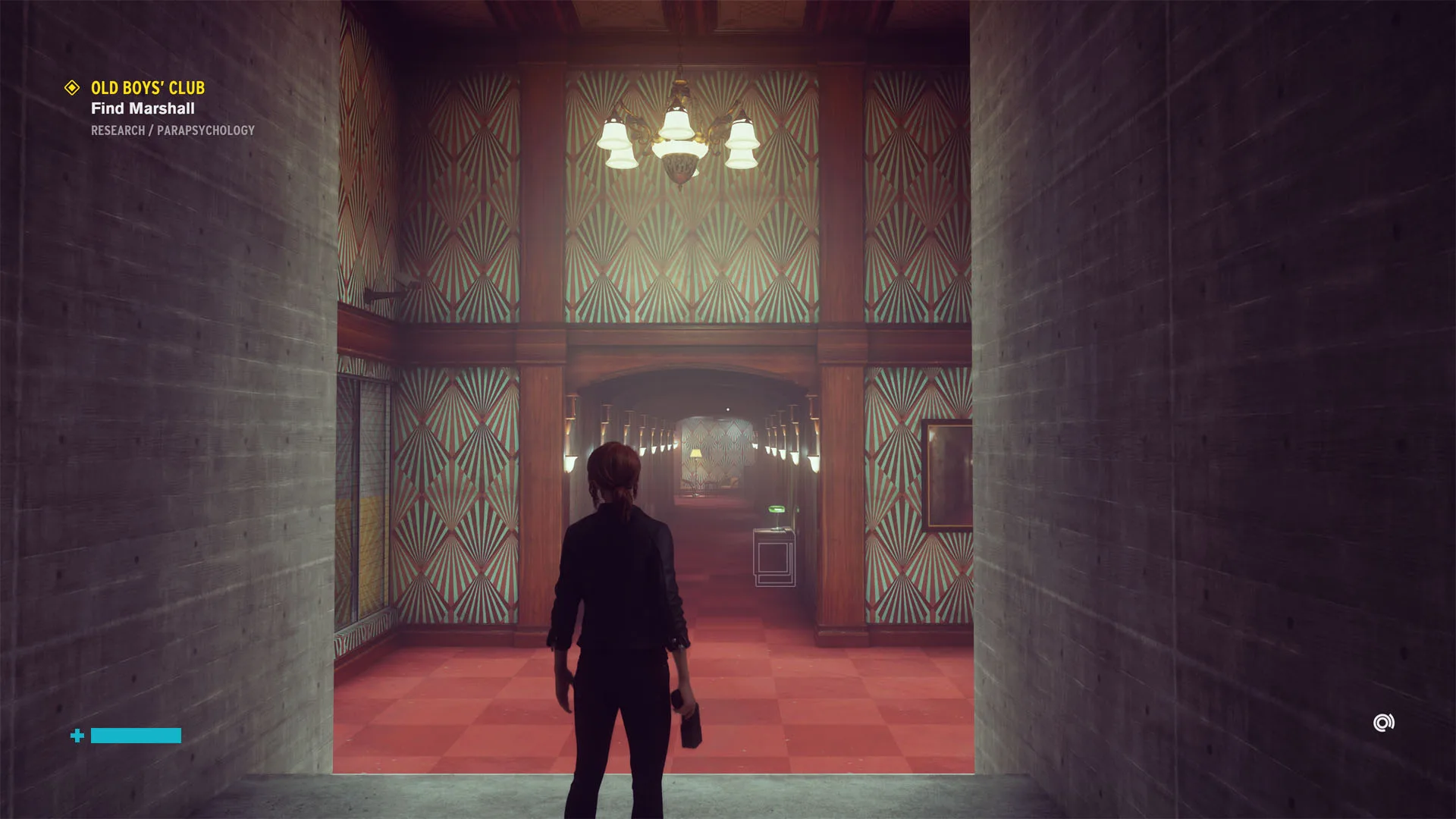
Performance Options
There are many options for playing Control including using either DX11 or DX12. Here are the graphics settings that we generally used.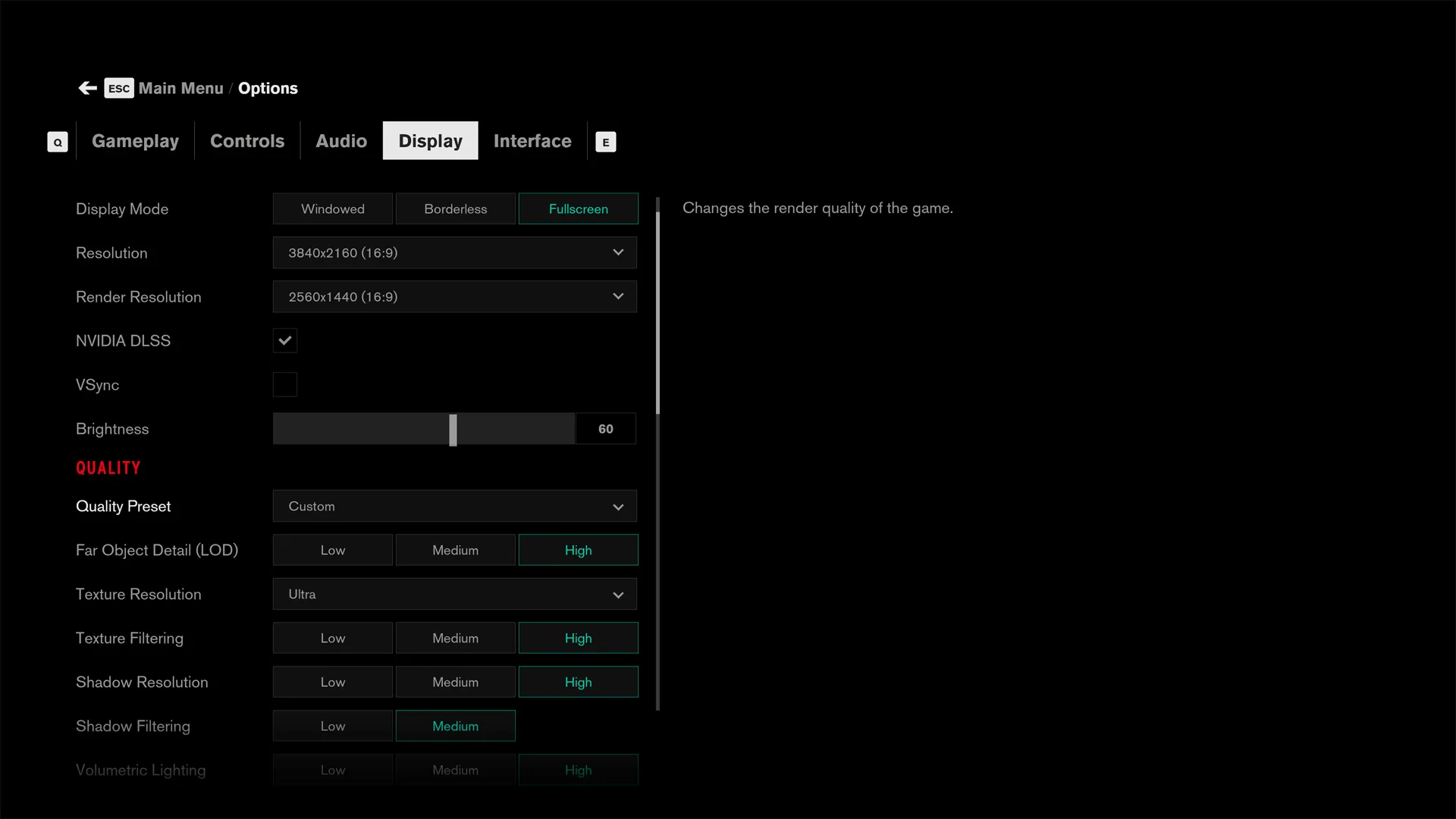
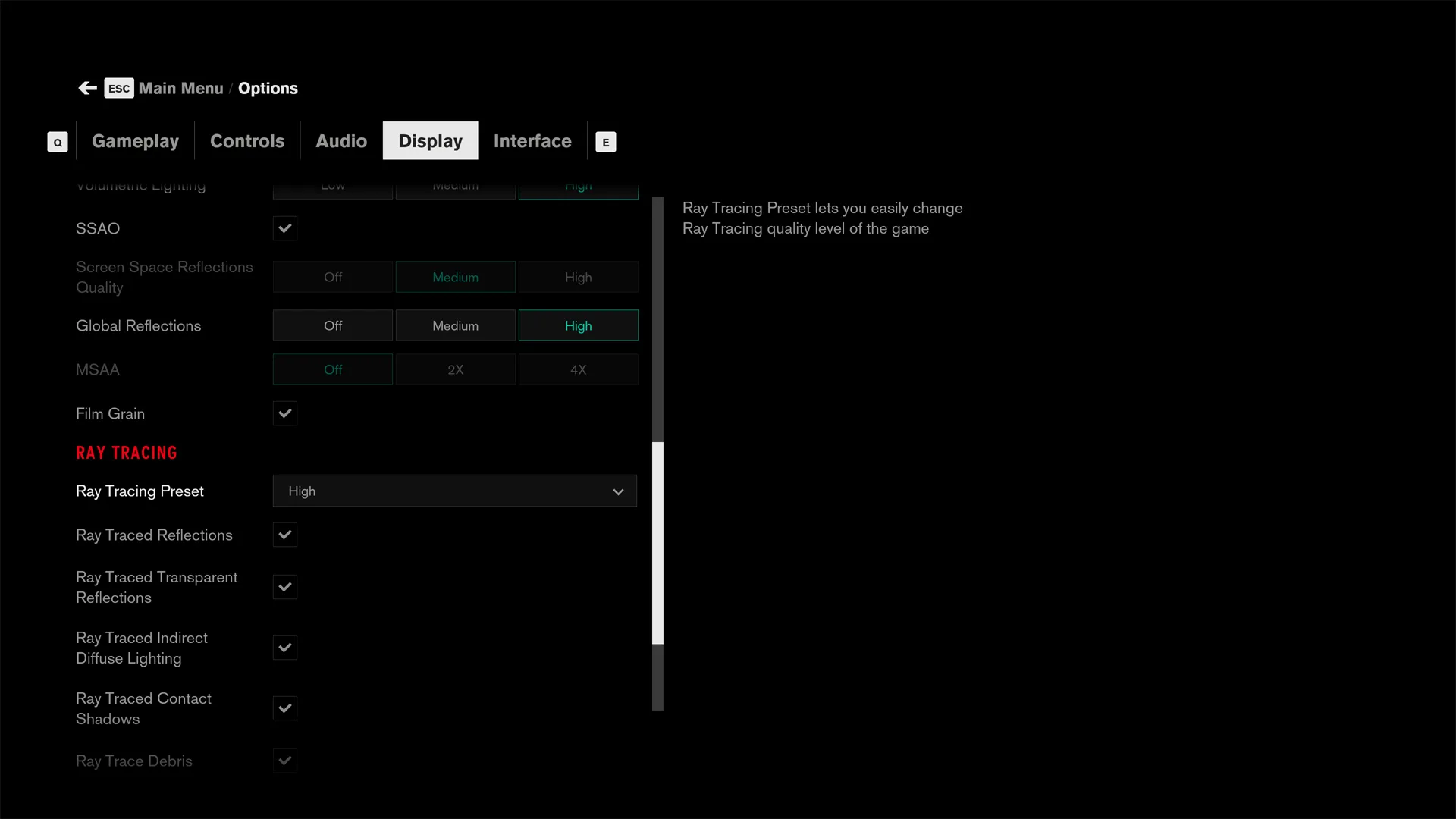
Ray Traced Reflections
Instead of prebaked rasterized lighting that game developers have had to use, ray traced reflections gives superior lighting which work well with the supernatural effect that Control strives for. 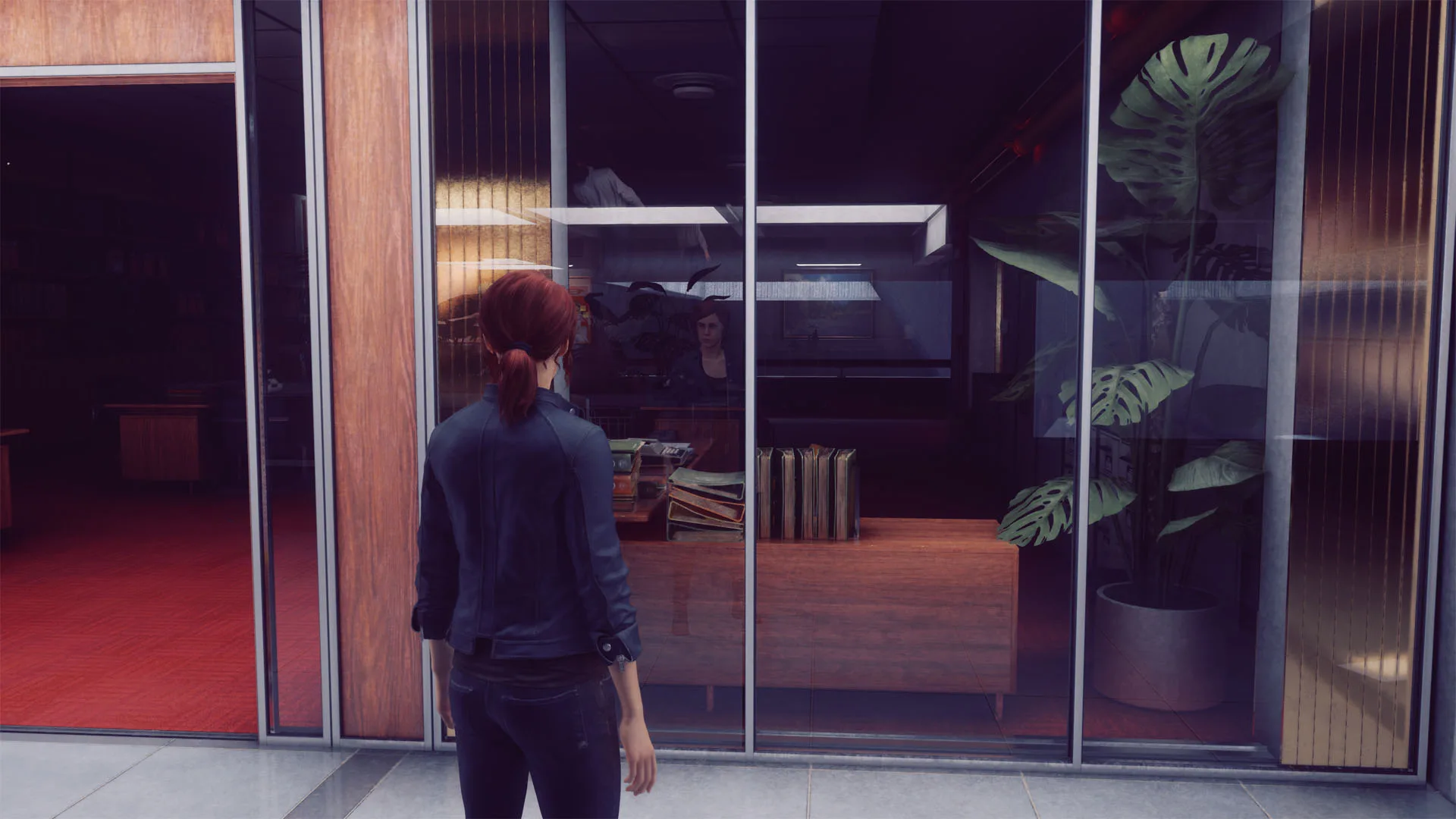
NVIDIA partnered with Remedy Entertainment to create realistic lighting effects for Control to add ray-traced opaque and transparent reflections, indirect diffuse illumination, contact shadows for many light sources, and DLSS for anti-aliasing using upscaling to maintain high performance.
We played smoothly with a RTX 2060 SUPER at 1920×1080 with maxed-out settings including ray tracing almost as well as we did with a RTX 2080 Ti at 3840×2160. Even with our new demanding benchmark, the framerates for the RTX 2080 Ti did not drop below 60 FPS with DLSS on. Turning off ray tracing brought framerates above 70 FPS.
[twenty20 img1=”14824″ img2=”14823″ offset=”0.5″ hover=”true”]
Control’s office environments are a good showcase for global illumination and reflections which cast realistic reflections on floors and walls. With ray-traced indirect diffuse lighting, we can see accurate details that include lighting from dynamic light sources reflected from nearby surfaces in real time.
[twenty20 img1=”14822″ img2=”14821″ offset=”0.5″ hover=”true”]
Control uses ray-traced contact shadowing to enhance accuracy of shadow maps cast from bright lights. By combining shadow maps and ray tracing, the most predominant shadows can be rendered at a high level of detail. Here are some comparison shots. Open them full-sized in separate windows or tabs.
RTX Off – 3840×2160

RTX On – DLSS upscaled from 2560×1440
RTX On – 3840×2160 – DLSS off/No MSAA
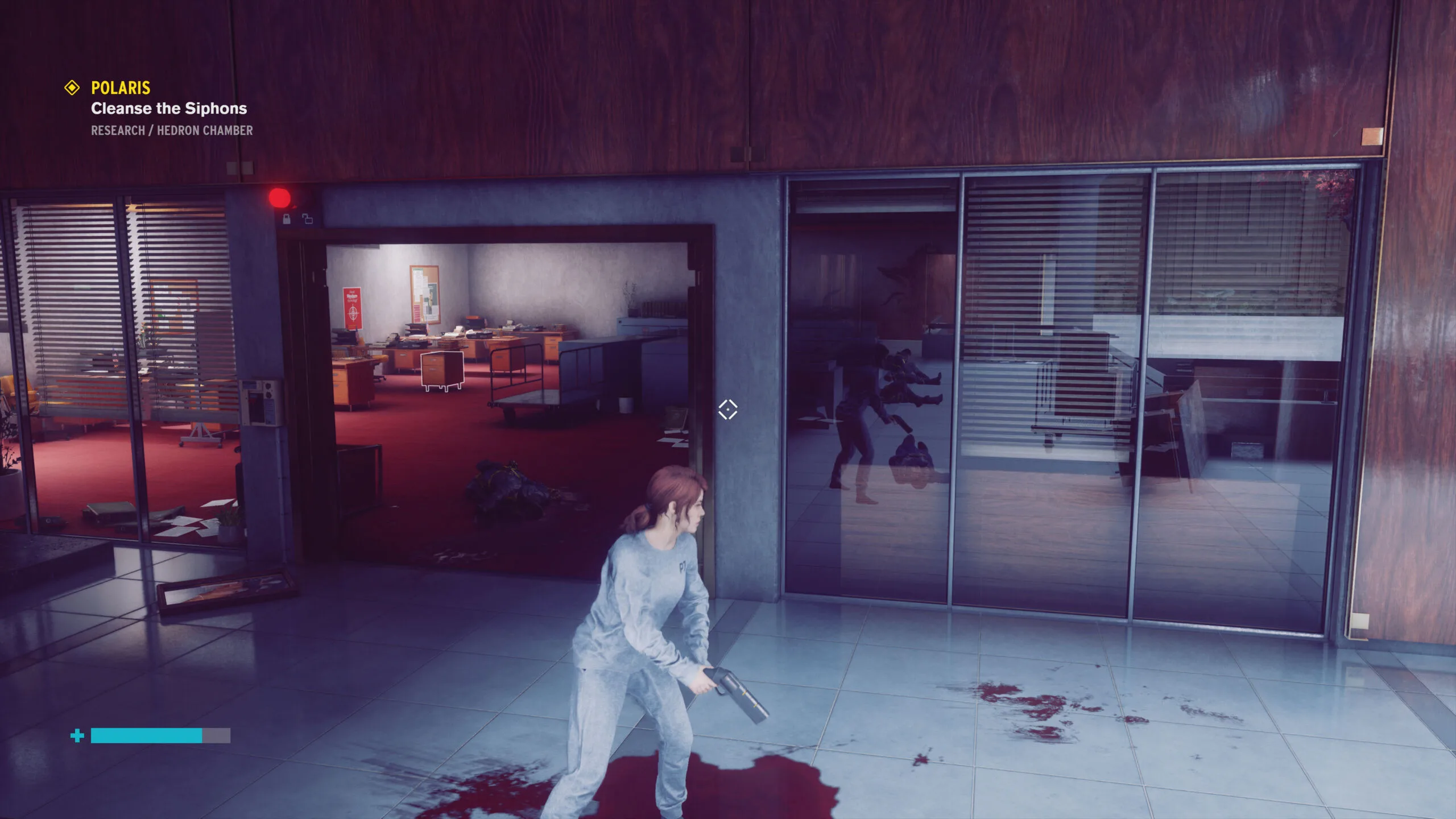
MSAA takes a substantial performance hit while DLSS is almost able to achieve the performance of the non-ray traced game. DLSS adds a slight blur and it isn’t perfect, but it looks great with the camera in motion.
The best time to check out real time ray traced reflections is while exploring. You do not want to admire the pretty visuals while in a firefight or Jesse will get shot. We played a considerable portion of the game in DX11 and still enjoyed it thoroughly – however, we missed the ray traced reflections on that API.
NVIDIA will have their optimization suggestions which may be helpful, or a player can just use the GeForce Experience included with the new Game Ready drivers that will be released before the Control launches on August 27. The GeForce Experience will, at the touch of a button, set near-ideal custom settings for any PC and for hundreds of games including for Control.
Conclusion
Control is a really good game and it has brought the most fun, challenge, and especially frustration that we have had with any game since Prey released. We were completely taken with and consumed by Control only stopping to eat and to sleep – and sometimes forgetting to eat. We neglected everything else while playing it. We went to bed late, exhausted, and when we woke up the next morning early, we returned immediately to playing.
Control is a really fun game once it gets started although it starts to drag on and get a bit repetitive and a lot harder in the endgame If you are a completionist, you may put over 30 hours into the game. If you just stick to the main storyline, you may play for 15-20 hours if you don’t get lost like we did.
Control deserves an “8” in our opinion as an excellent game that demands precision and good puzzle-solving ability. In this way, it is totally unforgiving and rather difficult. If the beginning was a little more interesting and the ending less tedious and repetitive, it would have tied with Metro Exodus for BTR’s Game of the Year so far for 2019.
Next up, BTR’s VR Wars with the Vive Pro and the Oculus Rift will compare the RX 5700 vs. the RTX 2060 performance.
Happy Gaming!
